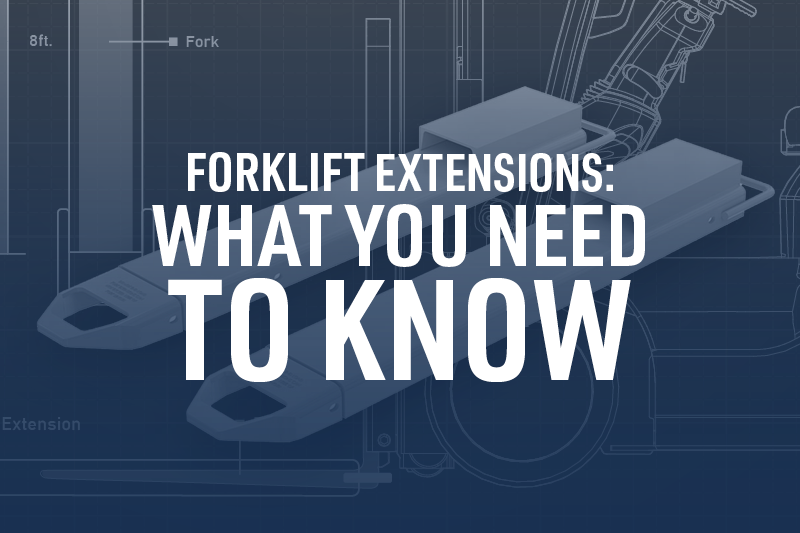Maximize Your Reach: The Ultimate Guide to Forklift Extensions
Maximize Your Reach: The Ultimate Guide to Forklift Extensions
Blog Article

In the fast-paced world of logistics and warehousing, every inch of reach counts. Whether you are moving pallets of goods, handling oversized materials, or navigating narrow aisles, the right equipment can make all the difference. Forklift extensions are a practical solution for businesses looking to enhance their lifting capabilities without investing in new forklifts. These attachments can significantly increase the length of your forks, enabling your team to manage larger and heavier loads with ease.
Understanding how to maximize your reach with forklift extensions can lead to greater efficiency in your operations. By optimizing your material handling processes, you can save time and reduce the risk of accidents, all while increasing productivity. In this guide, we will explore the various types of fork lift extensions available, their benefits, and best practices for use. Get ready to elevate your operations and unlock the full potential of your forklift fleet.
Understanding Forklift Extensions
Forklift extensions are attachments designed to enhance the reach and load capacity of standard forklift forks. These extensions are typically used in warehouse settings where handling oversized loads or pallets is a common requirement. By increasing the length of the forks, operators can safely transport larger items without the need for additional machinery, streamlining operations and improving efficiency.
It is important to recognize that forklift extensions come in various sizes and materials, catering to different lifting needs. Common materials include steel and aluminum, with each offering distinct benefits in terms of weight, durability, and cost. Operators must select the appropriate extension that matches the specifications of their forklift and the demands of the tasks performed.
Proper use of forklift extensions also involves understanding weight distribution and load limits. Exceeding the recommended weight can lead to dangerous situations, including tipping or damage to equipment. Always refer to the manufacturer's guidelines when selecting and utilizing forklift extensions to ensure safe and effective operation, maximizing both reach and productivity in the workplace.
Types of Forklift Extensions
Forklift extensions come in various shapes and sizes, designed to meet the diverse needs of different applications. One common type is the standard fork lift extension, which typically adds extra length to the existing forks. These extensions are ideal for handling longer loads that standard forks cannot manage effectively. They can be easily attached and detached, making them a popular option for warehouses with fluctuating inventory needs.
Another variation is the heavy-duty fork lift extension, designed for more demanding applications. These extensions are constructed from thicker materials, providing additional strength and durability. They are suitable for lifting heavier loads and are often used in construction sites or in industries where robust handling capabilities are required. Heavy-duty extensions ensure that the safety and integrity of both the load and the forklift are maintained under challenging conditions.
Finally, there are specific fork lift extensions tailored for unique tasks, such as pallet extensions or j-bar extensions. Pallet extensions are designed to accommodate wider loads like large pallets, while j-bar extensions create a lifting mechanism that allows the forks to work in tighter spaces. These specialized extensions enhance the versatility of forklifts, enabling operators to handle a variety of materials with ease and efficiency.
Benefits of Using Forklift Extensions
Using forklift extensions can significantly increase the efficiency of material handling operations. These extensions allow forklifts to handle larger and heavier loads that may not fit on standard forks, making it easier to transport bulky items. This capability can enhance productivity and streamline operations, as workers can move more materials in a single trip, reducing the number of cycles required to complete tasks.
Try It Out
Another notable advantage of forklift extensions is their versatility. They are designed to be easily attached and detached, allowing operators to quickly switch between different lifting tasks. This flexibility enables businesses to adapt to varying workload demands without needing to invest in additional specialized equipment. As a result, companies can optimize their forklift fleet and save on costs while still meeting the needs of their operations.
Finally, forklift extensions contribute to improved safety in the workplace. By providing better support for oversized loads, they help reduce the risk of accidents and injuries that may result from improper handling. This increased stability minimizes the likelihood of tipping and shifting loads during transport, promoting a safer environment for employees. Investing in forklift extensions not only enhances operational efficiency but also prioritizes the well-being of the workforce.
How to Choose the Right Forklift Extension
Choosing the right forklift extension is crucial for maximizing the efficiency of your material handling operations. First, assess the specific needs of your tasks. Consider the weight and size of the loads you frequently handle, as well as the intended lifting height. This assessment will help you determine the appropriate length and load capacity required for the extensions. Extensions that are too long can lead to instability, while those that are too short may not allow for safe and effective lifting.
Material quality is another important factor to consider. Forklift extensions are typically made from either steel or aluminum, and each material has its own advantages. Steel extensions offer greater durability and load capacity, making them ideal for heavy lifting situations. On the other hand, aluminum extensions are lighter and easier to maneuver, which can be beneficial for less demanding jobs. Consider the environment in which you will be using the extensions, as this can also influence the choice of material.
Finally, compatibility with your current forklift is essential. Check the specifications of your forklift model to ensure that the extensions you choose will properly fit and be securely attached. Many manufacturers offer guidelines or recommendations for the correct extensions tailored to specific forklift models. Consulting with a qualified supplier can also provide valuable insights to ensure you make an informed decision, ultimately improving safety and productivity in your operations.
Report this page